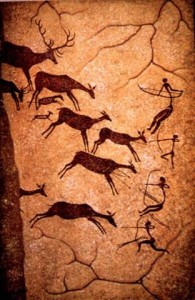While reading Trick And Treat by Barry Groves, I found information about an important study of heart disease interventions done in Finland. This study is important because the intervention group in this study was given the current standard of care for the prevention of heart attacks. One group was given the standard heart disease interventions: blood pressure medications, cholesterol medications, advice about diet and exercise. The other group was given no interventions. The study shows that while risk factors were improved, the number of deaths including from heart disease was actually higher in the intervention group. In other words, the standard interventions ultimately had the reverse effect of what was intended. Something in the standard treatments isn’t right.
From the book:
One [study] that did seem to support the “healthy” recommendations was a Finnish trial involving 1,222 men published in 1985. Men in the intervention group were seen regularly and advised about diet, physical activity and smoking. Those with high blood pressure or high cholesterol levels were treated with drugs. The men in this group did as they were advised and, as a result, the “predicted risks” for CHD were halved during the trial. It was hailed as a great success because: “The program markedly improved risk factor status.” In other words, they succeeded in changing their subjects’ diets, and so on. In December 1991, the results of a 15-year follow-up to that trial were published. During this period the intervention group had continued to be instructed on diet, smoking and exercise and treated for high blood pressure and cholesterol when present. Were they healthier? Did they live longer? The results are show in the table:
Deaths during 15-year follow-up Intervention group Control group Total deaths 67 46 Heart disease deaths 34 14 These figures show that not only did those who continued to follow the carefully controlled, cholesterol-lowering diet had more deaths in total, they were also more than twice as likely to die of heart disease as those who didn’t – some success!
Dr Michael Oliver, Professor of Cardiology at Edinburgh University’s Cardiovascular Research Unit, commenting on these results in the British Medical Journal, wrote that:
This runs counter to the recommendations of many national and international advisory bodies which must now take the recent findings from Finland into consideration. Not to do so may be ethically unacceptable. We must now face the fact that the evidence from large, well conducted trials gives little support to hopes that altering the lifestyle of the community at large, when started in middle age, will reduce cardiac deaths or total mortality.
References:
Barry Groves. Trick And Treat – how ‘healthy eating’ is making us ill. 2008.
Barry Groves’ site: http://www.second-opinions.co.uk/
Miettinen TA et al. Multifactorial Primary Prevention of Cardiovascular Diseases in Middle-aged Men, JAMA. 1985;254(15):2097-2102.
Strandberg TE, et al. Long-term Mortality After 5-Year Multifactorial Primary Prevention of Cardiovascular Diseases in Middle-aged Men, JAMA. 1991;266(9):1225-1229.
Oliver MF. Doubts about preventing coronary heart disease. BMJ 1992; 304: 393-4.
